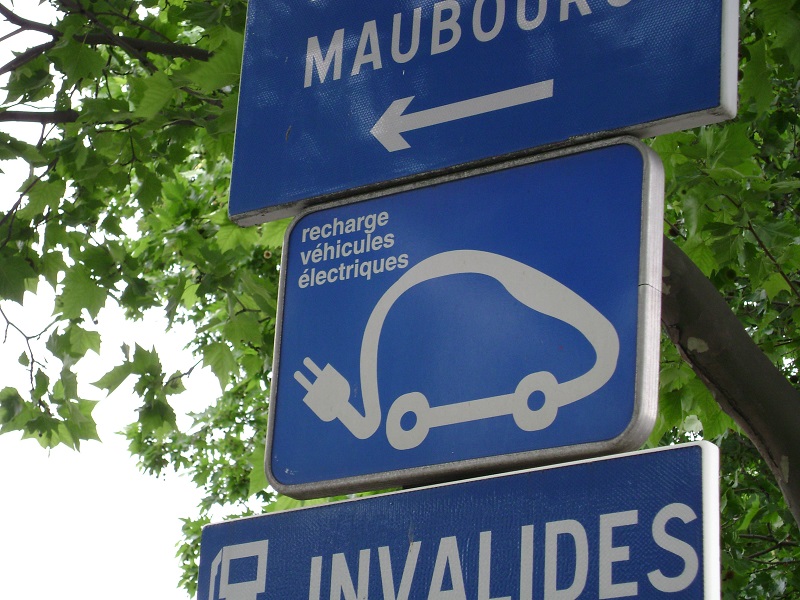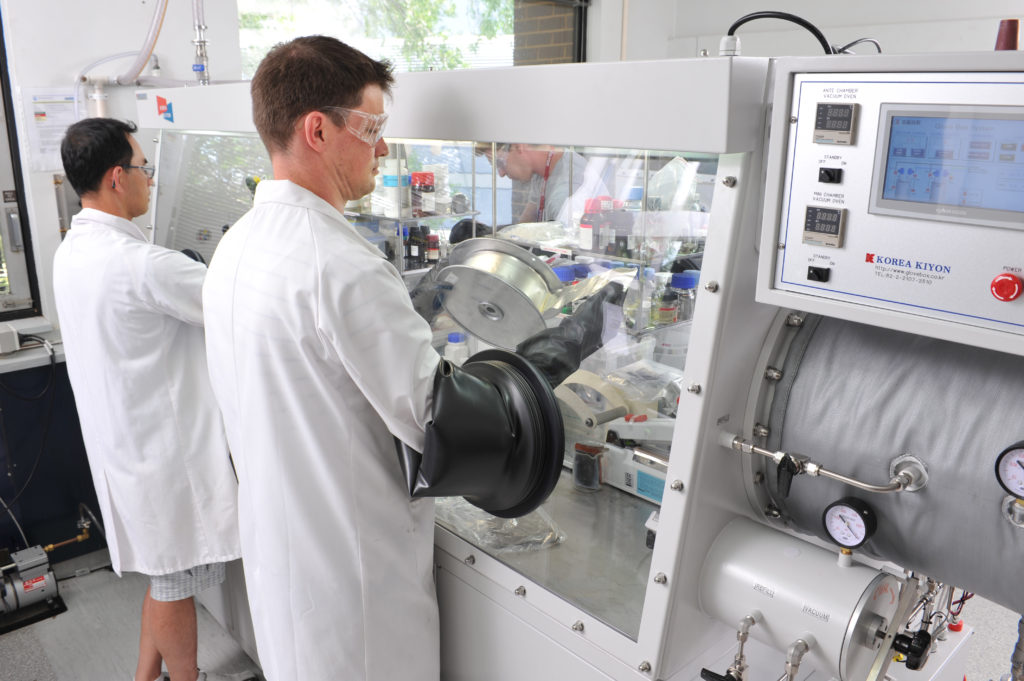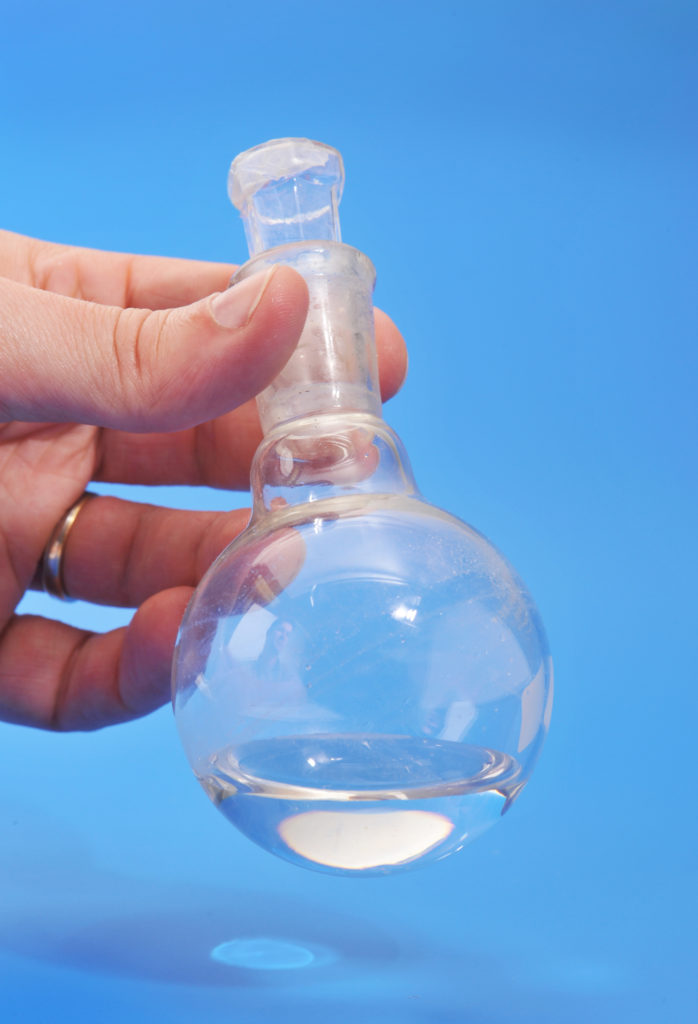A salty bath could make range anxiety a thing of the past.

A charging station in France may be a relief for drivers suffering from range anxiety. Image credit – David Megginson/Flickr
Range anxiety or EV (electric vehicle) anxiety – yes, the phenomena has a name! – is a very real and troublesome challenge for electric vehicle drivers. So much so, the Norwegian equivalent for ‘range anxiety’, rekkeviddeangst, was determined to be the second most popular word of the year in 2013. For those not up to speed on electric car terminology, range anxiety is when a driver of an electric car becomes anxious or stressed that their vehicle’s battery will run out of power before the destination or charging point can be reached.
Obviously, finding a cost effective solution to EV anxiety is high on the electric vehicle industry’s agenda, and will greatly impact the way drivers use electric cars. There have even been apps created that calculate an EVs range and prevent a vehicle expiring mid-trip. The current list of strategies to combat range anxiety includes developing a more extensive charging station infrastructure, using range extenders, and battery swapping.
And now thanks to our battery innovators we can add to that list: salt baths.

CSIRO, RMIT and Queensland University of Technology are currently working on developing a “salt bath” that stabilise lithium metal foils and increase battery life and performance.
We’re working with RMIT and Queensland University of Technology to develop a “salt bath” that will stabilise lithium metal foils and increase battery life and performance.
The battery scientists have just published a research paper in Nature Communications that shows the value in pre-treating a battery’s lithium metal electrodes with an electrolyte salt solution before its fabrication.
The simple technique involves the immersion of lithium metal electrodes in an electrolyte bath containing a mixture of ionic liquids and lithium salts prior to a battery being assembled. It could hold the key to developing the next generation of energy storage solutions. Ultimately, our scientists hope it will solve the issue or ‘range anxiety’ and disrupt the entire electric vehicle industry.
The pre-treatment process has been demonstrated to extend battery life to a point where electric vehicles will soon have the same range capacity as their traditional petrol counterparts.
The research, which formed a large part of Dr Andrew Basile’s doctoral thesis with RMIT University, investigated the battery processes occurring at lithium metal. Working closely with our researcher Dr Anand Bhatt, Andrew discovered that pre-treating the electrodes before fabrication stage reduces the breakdown of electrolytes during operation, which is what determines the battery’s increased performance and lifetime.

The Room Temperature Ionic Liquid (RTIL) electrolytes developed by our scientists in conjunction with RMIT and Queensland University of Technology may hold the key to solving electric car “battery range anxiety”.
The Room Temperature Ionic Liquid (RTIL) electrolytes developed by our scientists in conjunction with RMIT and Queensland University of Technology may hold the key to solving electric car “battery range anxiety”.
The process uses specially developed Room Temperature Ionic Liquid (RTIL) to deposit a protective film onto the surface of electrodes that helps stabilise the lithium metal and the battery when in operation. RTIL comes in a range of chemical compositions. The unique class of material is clear, colourless and odourless. It is also non-flammable, which means exploding laptops could be a thing of the past. We hold the patents on these unique materials to both pre-treat and cycle batteries with them.
The salt bath process creates batteries with charge efficiency greatly exceeding standard lithium batteries and potentially outperforming other commercial batteries. What’s more, it is readily transferable to existing manufacturing processes making it easily adopted by manufacturers.
The team of energy and manufacturing scientists is currently developing batteries based on this technology, and are looking for partners to help bring these materials and devices to market.
So look out EV industry – you’re about to be disrupted! And we think that pretty soon, thanks to this new and simple technique, rekkeviddetilfredshet (range satisfaction) could become a strong contender for Norwegian word of the year!


16th July 2016 at 4:38 pm
I presume you have investigated the Stanford Al-ion battery technology as well. Do you have a considered opinion yet?
I do know that as theirs is (so far) a gel your ionic liquid treatment will not the all that useful yet.
22nd July 2016 at 2:18 pm
Hi Paul,
The treatment we have developed is really specific to Lithium metal anodes. In the case of an Al-ion battery, Al is not in the metallic state, say like Lithium as we treat it, so the type of electrolyte and the interfacial chemistry is very different and requires different solutions.
Regards,
Ellen
CSIRO Social Media
22nd July 2016 at 2:19 pm
Hi Paul,
The treatment we have developed is really specific to Lithium metal anodes. In the case of an Al-ion battery, Al is not in the metallic state, say like Lithium as we treat it, so the type of electrolyte and the interfacial chemistry is very different and requires different solutions.
Regards,
Ellen
CSIRO Social Media
22nd July 2016 at 2:19 pm
Hi Paul,
The treatment we have developed is really specific to Lithium metal anodes. In the case of an Al-ion battery, Al is not in the metallic state, say like Lithium as we treat it, so the type of electrolyte and the interfacial chemistry is very different and requires different solutions.
-CSIRO Social Media
14th July 2016 at 1:36 pm
Does this process do anything to reduce the intensity of a lithium metal fire in the event of cell rupture, say in a vehicle collision?. The short cycle life and risk of dendrite formation aren’t the only reasons not to use lithium metal batteries in electric vehicles.
16th July 2016 at 4:36 pm
yes, if you read the article and the paper.
14th June 2016 at 11:31 pm
It is most interesting to learn of the RTIL process which improves lithium performance and extends battery life. If such processing applies to a wide range of batteries, such as those used in torches, cameras, watches, etc. then revenue accorded by RTIL patent rights would be considerable for quite a few years. Demands on lithium supply should diminish to help save a valuable resource. Can “spent” lithium be recycled some way, as can battery lead (plumbum)?
15th June 2016 at 11:05 am
Hi Frank,
Regarding recycling, Li ion batteries can be recycled to recover many of the components of the battery, although the driver for recovering the Li proportion is dictated by economics and is debatable whether it is currently viable.
For the technology proposed here for next-gen batteries based on using Li metal it will in principle make the recycling of Li easier and therefore more economical. Overall for recycling it will depend on the roll out of batteries and the price of Li.
We hope this helps.
-CSIRO Social Media
15th June 2016 at 1:18 pm
Hi Frank,
I was researching this a while ago, and it seems to be that the main barrier to large scale recycling of EV batteries is the lack of EV batteries ready for recycling. Once batteries of the same chemistry are in large scale production long enough to wear out in large quantities (apparently after >10years in a car, and an indefinitely amount of time in secondary uses), now experimental processes can be scaled up and optimized. Tesla’s already done the right thing by designing non-toxic, recyclable batteries from the beginning.
https://www.teslamotors.com/blog/mythbusters-part-3-recycling-our-non-toxic-battery-packs
This article looks at the problem in light of the success in recycling lead-acid batteries (which are toxic, yet 99% recycled).
http://www.sciencedirect.com/science/article/pii/S2214993714000037
15th June 2016 at 1:31 pm
Thanks CSIRO Social Media & Dennis for that information. As a modified version of the old saying goes: “When there is a will there is a way – if there is the money to do so”
Frank